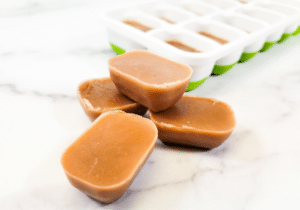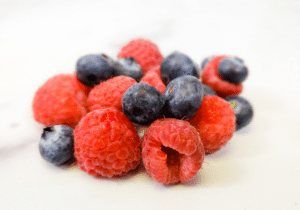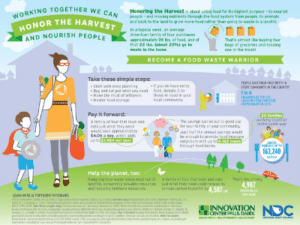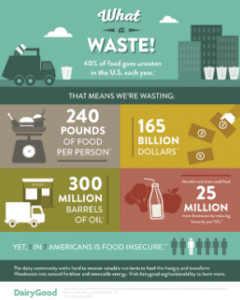The hard truth is that approximately 40% of food goes uneaten in the U.S. each year. (1) In a typical week, an average American family of four purchases 96 pounds of food, and of that, 22 pounds (about 23%,) goes to waste in the home. (2) That’s like buying four bags of groceries and tossing one in the trash. We can help with some simple ways to Reduce Your Carbon Footprint!
Striving to reduce this needless waste can help our planet, too. Reducing food waste keeps it out of landfills, conserving valuable resources. A family of four that buys and eats just what they need could reduce its carbon footprint by 4,587 pounds each year! (3)
While the dairy community works hard on the back end to transform food waste into natural fertilizer and renewable energy, there are many simple steps you and your family can take to prevent food waste from the start. Making simple adjustments to your shopping, storing and eating routine is a great place to start. Start by meal planning for the week and buying only what’s on your grocery list. For extra non-perishable food, considering donating it a food pantry or those in need in your community.
And one of the biggest impacts you can make is to routinely manage your food storage and utilize those leftovers. Want to learn easy ways to cut back on food waste starting today? Here are a few ways to make the most of your milk, cheese, and yogurt so you don’t ever end up throwing out that dairy powerhouse of nutrients!
5 SUSTAINABLE CULINARY TIPS
YOGURT

Mix extra plain yogurt with olive oil, salt and black pepper. Use as a dip for leftover raw veggies, a spread for toasted bagels or a base for canned tuna instead of mayonnaise.
CHOCOLATE MILK

Freeze extra chocolate milk that you have in ice cube trays. Use the cubes for iced mochas, smoothies or even for drinking a cold glass of chocolate milk!
CHEESE RINDS

Freeze aged cheese rinds like Parmesan. When heating or cooking soups, tomato sauce, pasta or rice dishes, toss in and melt the rinds for a creamy, cheesy flavor.
FRUIT

Freeze overripe bananas and berries. Blend the frozen fruit with leftover plain yogurt and milk to whip up milkshakes or smoothie bowls.
HERBS

Chop up those wilted herbs and add them to ice cube trays. Top off each compartment with melted butter and freeze. Use the herb butter cubes to sauté and flavor vegetables, chicken, fish and more!
CLICK HERE TO DOWNLOAD THE HONOR THE HARVEST INFOGRAPH

CLICK HERE TO DOWNLOAD THE WHAT A WASTE INFOGRAPH






